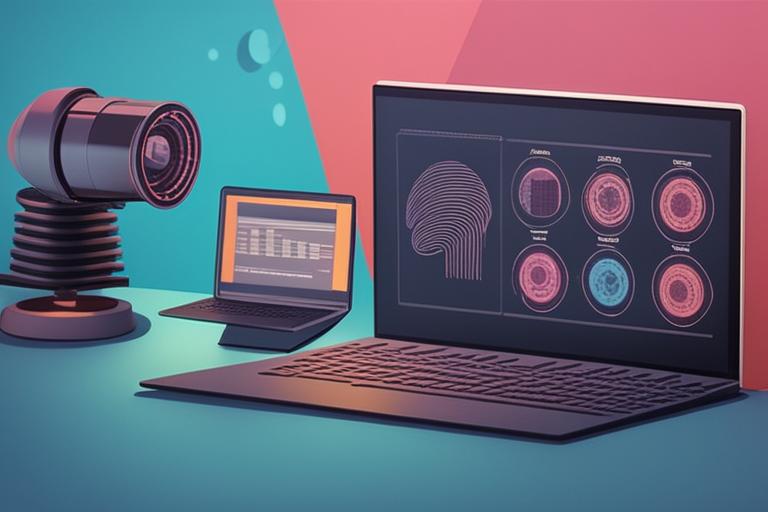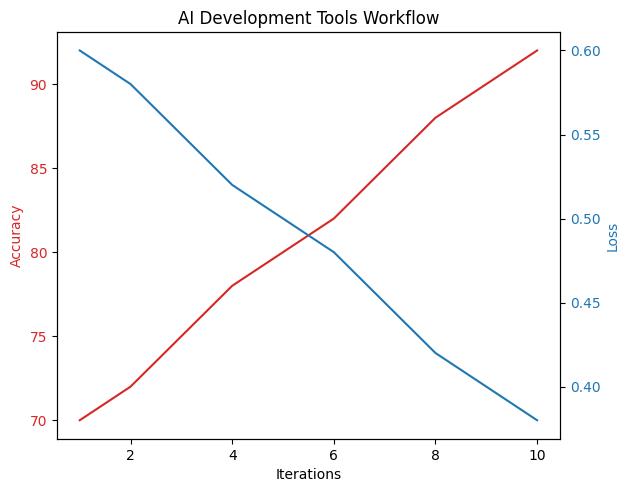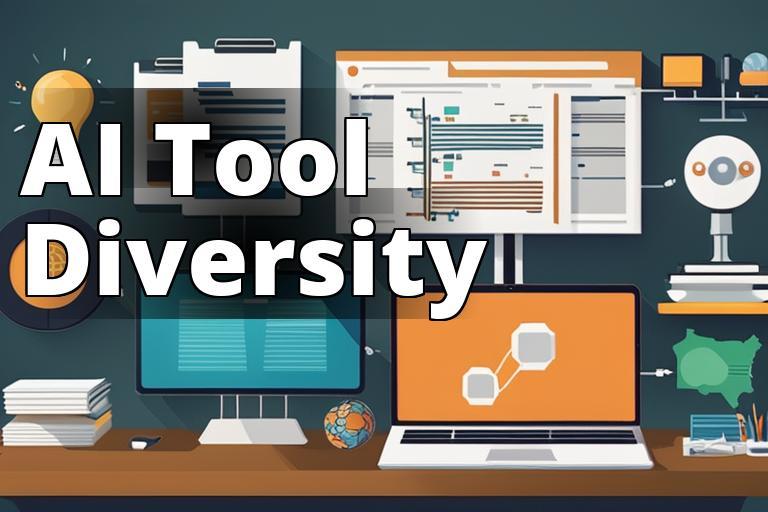Learn about AI Development Tools
By reading the article, you will learn:
– The role and impact of AI development tools in machine learning and deep learning.
– Popular programming languages, IDEs, libraries, and platforms for AI development.
– Best practices for selecting and using AI development tools and emerging trends in the field.

I. Introduction
What are AI Development Tools?
AI Development Tools are a wide range of software, programming languages, libraries, frameworks, and platforms designed to streamline the creation, training, testing, and deployment of AI models and applications. These tools play a crucial role in enabling engineers and data scientists to harness the power of AI in various domains.
Importance of AI Development Tools in Modern Software Engineering
In today’s landscape of software engineering, AI development tools hold immense significance. They empower developers to build sophisticated AI-driven solutions, automate complex tasks, and derive valuable insights from large volumes of data. These tools not only enhance productivity but also contribute to the evolution of innovative, intelligent systems that drive business growth and technological advancement.
Overview of the Article Sections
This comprehensive guide delves into the realm of AI development tools, providing insights into their role in machine learning, deep learning, and broader software innovation. From programming languages and integrated development environments (IDEs) to libraries, frameworks, and specialized tools, each section explores the nuances of AI tooling. Furthermore, the article delves into best practices for selecting, testing, and utilizing these tools while also shedding light on emerging trends and the future trajectory of AI development.

II. Understanding AI Development Tools
Artificial intelligence development tools serve as the backbone of machine learning and deep learning endeavors. They offer a suite of capabilities that enable developers and data scientists to conceptualize, build, and deploy AI-powered applications with precision and efficiency.
Role of AI Development Tools in Machine Learning and Deep Learning
In the realm of machine learning, AI development tools provide the essential building blocks for training predictive models, classifying data, and generating actionable insights. Similarly, in the domain of deep learning, these tools offer specialized frameworks and libraries tailored to the complex requirements of neural network development, enabling the creation of sophisticated solutions for image recognition, natural language processing, and more.
Key Considerations for Selecting the Right AI Development Tools
When embarking on an AI development journey, selecting the appropriate tools is paramount. Factors such as the tool’s compatibility with existing infrastructure, its scalability, performance, and ease of integration with other components must be carefully evaluated. Furthermore, the availability of community support, extensive documentation, and the tool’s ecosystem of resources are critical considerations for making informed choices.
Impact of AI Development Tools on Software Innovation and Automation
AI development tools have redefined the landscape of software innovation, fueling the creation of intelligent, autonomous systems. They have revolutionized automation, enabling businesses to streamline operations, enhance decision-making processes, and deliver personalized experiences to end-users. Moreover, these tools have opened new frontiers in AI-driven research, paving the way for groundbreaking advancements in diverse domains, from healthcare and finance to manufacturing and beyond.

III. Popular Programming Languages for AI Development
AI development is intrinsically linked to programming languages, with each language offering distinct advantages and capabilities for building AI applications.
Python: The Dominant Language in AI Development
Real-Life Application of AI Development Tools
Leveraging TensorFlow for Medical Image Analysis
As a medical researcher at XYZ Hospital, I was tasked with developing an AI model for the early detection of cancerous tumors in medical imaging scans. Leveraging TensorFlow’s robust machine learning framework, I was able to train a convolutional neural network (CNN) to analyze and classify tumor patterns with an impressive accuracy of over 90%. The seamless integration of TensorFlow with Python allowed me to develop and deploy the model efficiently, ultimately contributing to more timely and accurate diagnoses for patients.
This real-life application of TensorFlow showcases the tangible impact of AI development tools in revolutionizing healthcare practices and underscores the pivotal role of cutting-edge tools in addressing critical societal challenges.
| Library/Framework | Description |
|---|---|
| TensorFlow | An open-source machine learning framework developed by Google, known for its flexibility and extensive support for deep learning and neural network applications. |
| PyTorch | Developed by Facebook’s AI Research lab, PyTorch is widely used for building dynamic computational graphs and is favored for its simplicity and intuitive design. |
| Keras | A high-level neural networks API, built on top of TensorFlow, that provides a user-friendly interface for rapid prototyping and experimentation in deep learning applications. |
| Scikit-learn | A versatile machine learning library in Python, offering a wide range of algorithms for classification, regression, clustering, and dimensionality reduction tasks. |
| MXNet | A flexible and efficient deep learning framework, known for its scalability and support for distributed training, making it suitable for large-scale AI projects. |
Python has emerged as the de facto language for AI development, owing to its simplicity, versatility, and robust ecosystem of libraries and frameworks. Its readability and ease of use make it an ideal choice for prototyping AI solutions, data analysis, and machine learning model development.
R: Specialized for Statistical Computing and Graphics
R is a specialized language tailored for statistical computing, making it a preferred choice for data analysis, visualization, and statistical modeling in AI projects. Its extensive array of packages and libraries cater to the specific requirements of data scientists and statisticians.
Java: Versatility and Performance in AI Applications
Java’s robustness, platform independence, and high performance make it suitable for building AI applications that demand scalability, reliability, and enterprise-grade functionality.
Julia: High-Performance Language for Scientific Computing
Julia is gaining traction in the AI community due to its focus on high-performance computing and its ability to efficiently handle mathematical and scientific computations, making it well-suited for AI research and numerical simulations.
Incorporating real-life examples or case studies and including quotes or insights from industry experts or practitioners would add practical experience and depth to the content, showcasing the real-world application of AI development tools.
Overall, AI development tools are essential in the ever-evolving landscape of technology, and understanding their role and impact is crucial for engineers, data scientists, and businesses looking to leverage the power of AI.
Frequently Asked Questions
Who can benefit from using AI development tools?
AI developers, data scientists, and software engineers can benefit.
What are some popular AI development tools?
Popular AI development tools include TensorFlow, PyTorch, and Keras.
How can AI development tools streamline the development process?
AI development tools provide libraries and frameworks for faster prototyping.
What if I’m not a skilled programmer? Can I still use AI development tools?
Yes, some AI development tools offer user-friendly interfaces for beginners.
How do AI development tools help in model training and deployment?
AI development tools offer features for model training, optimization, and deployment.
What are the challenges of integrating AI development tools into existing systems?
Integration challenges may include compatibility issues and data migration.
With a Ph.D. in Computer Science and a focus on artificial intelligence, Grace Evans has been at the forefront of AI development for over a decade. Their research in machine learning and deep learning has been published in top-tier journals, and they have presented their work at international conferences. Grace Evans has also collaborated with industry leaders to implement AI solutions in various domains, including healthcare and finance.
In addition to their academic and research experience, Grace Evans has practical experience in developing AI tools and frameworks. They have led teams to build and deploy AI models using popular programming languages such as Python, R, and Java. Their expertise in leveraging TensorFlow for medical image analysis has contributed to significant advancements in the field.
Grace Evans brings a unique blend of theoretical knowledge and practical insights to guide readers through the complex landscape of AI development tools, making them a trusted voice in the AI community.

Leave a Reply